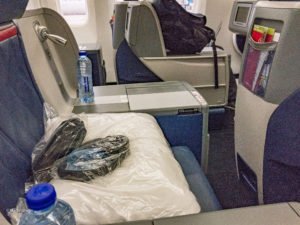July 2021
I was reading recently that United Airlines have ordered 15 supersonic jetliners for delivery later this decade. I also saw that a new residential cruise ship called Njord is being launched that will sell residences (not cabins) for between $8 and $30 million. That got me thinking about the romance of travel, something of which we appear to have been sadly lacking lately.
Throughout the modern era of tourism efforts have always been made to add excitement to the whole process of traveling. The stage coaches of the eighteenth an early nineteenth century were always given names to indicate their speed. ‘Lightening’ in England, ‘Stellwagon’ and ‘Eilwagon’ in Germany and ‘Flying Machine’ here in the USA. That despite the fact they probably only traveled at five miles an hour!
The railroads got in on the act of course and named their trains and locomotives from the earliest days. These early attempts at marketing were aimed at exciting the prospective traveler. Not only were the names evocative but serious attempts were made to provide exceptional levels of luxury.
Shipping companies from the 1800s onwards also majored on luxury and speed, across the world. It’s true that the majority of passengers traveled in ‘steerage’ or third class on the ships and experienced anything but luxury, but the image was all that mattered. Ships became larger and larger, and ever more speedy. Across the Atlantic shipping lines competed for the Blue Riband, the prize for the fastest crossing. Again the magic was in the names and the marketing with ships like Normandie, Queen Mary, Bremen and United States competing for the ultimate record. The liner United States held the record from 1952 until 1986, when it was beaten by Sir Richard Branson’s Virgin Atlantic Challenger, although as that only held about 4 people it doesn’t count as a liner in my mind! The United States averaged just under 40 miles per hour, but the luxury on board was phenomenal.
On the railroads from the mid 1800s through to the 1950s famous trains offered unimaginable (to the average traveler) levels of speed and luxury. Think of the 20th Century Limited from New York to Chicago, The Orient Express, which featured in novels and stories (most notably ‘Murder on the Orient Express’ by Agatha Christie), The Trans Siberian Express from Moscow to Vladivostok – 5772 miles, The Blue Train in South Africa, The Flying Scotsman in Britain, the Ghan in Australia, and countless others. Of course the luxury came about by including Pullman Cars in many trains, or in Europe the Wagons Lits. Many railroads still have luxury and high speed trains (the Acela here in USA and the Bullet Trains of Japan) but regrettably the luxury has passed and many trains today are very ordinary.
Airlines of course used their speed and luxury to attract passenger from the 1920s onwards. Juan Tippe’s Pan American blazed trails across the world with luxury flying boats. Other nations competed of course and following the Second World War the air routes around the world were flown by exotically names airliners – Comet, Constellation, and Stratocruiser. Airlines named their individual aircraft, with Pan Am’s Clippers and TWA Star Stream jets.
In flight service was how airlines differentiated themselves offering not just excellent food but cocktail bars in the sky, sleeping bunks and in flight entertainment.
Although the Boeing 747 was known as The Queen of the Skies, it did usher in the chance to cram as many people into a plane as possible, and for many (except those few in the first class front cabin of the jets) flying was no longer the ‘experience’ many would like. The Airbus A-380 took size to a whole new level, and for the majority of the between 379 and 615 passengers, luxury is not a word they would consider.
Concorde, the supersonic airliner that flew on a very few routes between 1976 and 2003 was a notable exception to the trend. Never a commercial success, Concorde flew its 100 passengers at twice the speed of sound in unashamed luxury.
Well, perhaps we’ve come full circle. United Airlines plans to reintroduce supersonic travel. Luxury cruise ships are beginning to set sail again, and there are increasing numbers of ‘special’ luxury trains running around the world.
Let’s hope the romance, luxury and speed of traveling is making a welcome return.








